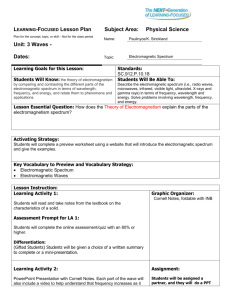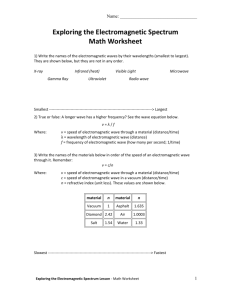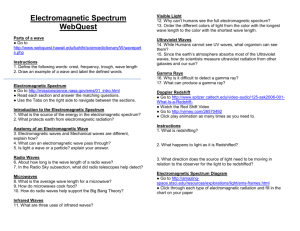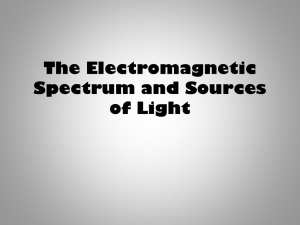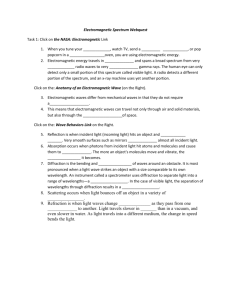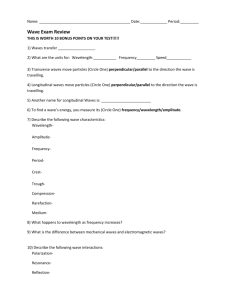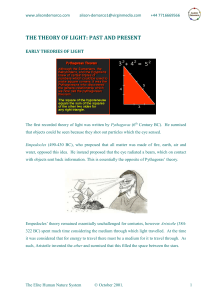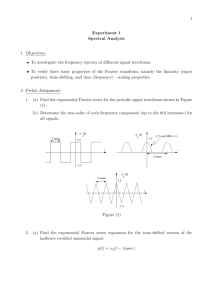5 Waves SG - Solon City Schools
advertisement
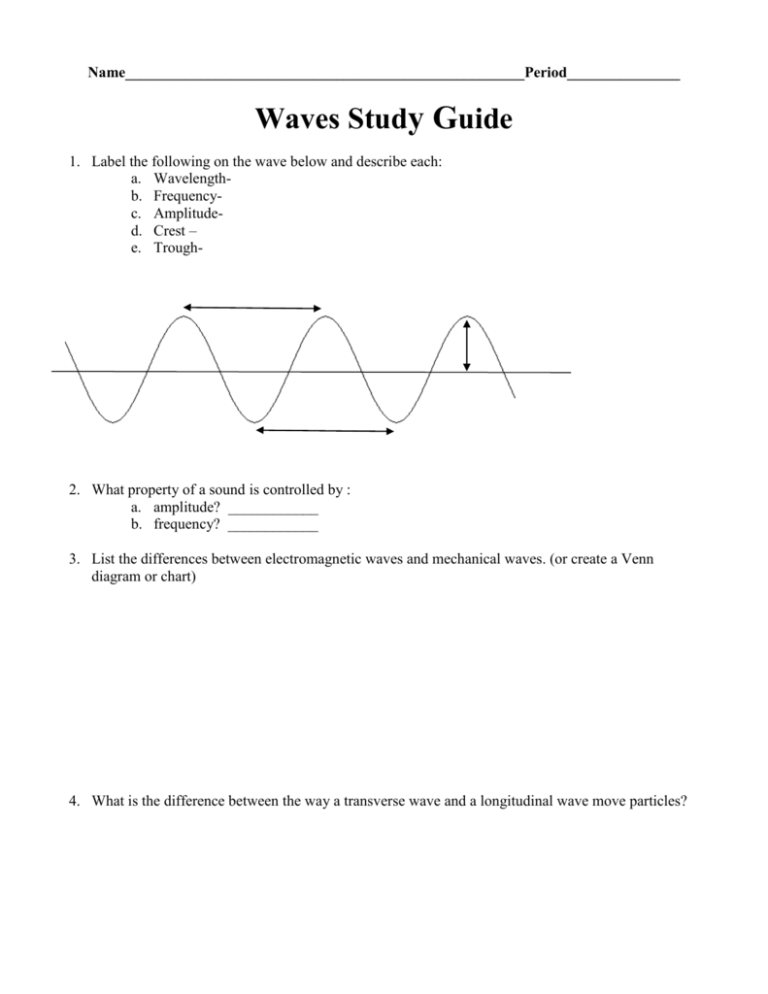
Name_____________________________________________________Period_______________ Waves Study Guide 1. Label the following on the wave below and describe each: a. Wavelengthb. Frequencyc. Amplituded. Crest – e. Trough- 2. What property of a sound is controlled by : a. amplitude? ____________ b. frequency? ____________ 3. List the differences between electromagnetic waves and mechanical waves. (or create a Venn diagram or chart) 4. What is the difference between the way a transverse wave and a longitudinal wave move particles? 5. Draw a longitudinal wave. Label the compressions and rarefactions. 6. Classify each of the following: Type of wave Electromagnetic or Mechanical? Transverse or Longitudinal? Wave made with a slinky Wave made with a jumprope (up and down) Light wave 7. Why is the speed of a mechanical wave different in solids, liquids and gases? 8. Draw a picture for each of the following wave interactions: Reflection Refraction Diffraction Does it require a medium? 9. Describe what happens to the sound of a train whistle as it approaches you. Why does this occur? 10. What happens to the sound when the train passes you and is moving away? 11. What is constructive interference? Draw a picture! . 12. What is destructive interference? Draw a picture! 13. Define the following types of energy transfer and draw a picture for each. Then give an example. a. Conduction- b. Radiation c. Convection- 14. Consider the electromagnetic spectrum as you answer these 6 questions. a. Which region of the electromagnetic spectrum has the highest frequency? b. Which region of the electromagnetic spectrum has the longest wavelength? c. Which region of the electromagnetic spectrum will travel with the fastest speed? d. Which color of the visible light spectrum has the greatest frequency? e. Which color of the visible light spectrum has the greatest wavelength? f. Which region of the electromagnetic spectrum has the most energy? 15. Which property of the visible light spectrum determines what color you see?____________________ 16. Describe what is happening with the heat energy when an object is at thermal equilibrium. Draw a picture to help explain. 17. What types of surfaces absorb the most energy? (color, texture)_____________________ 18. An object that does NOT allow light to pass through is called: __________________ 19. An object that allows light to pass through freely is called: _____________________




